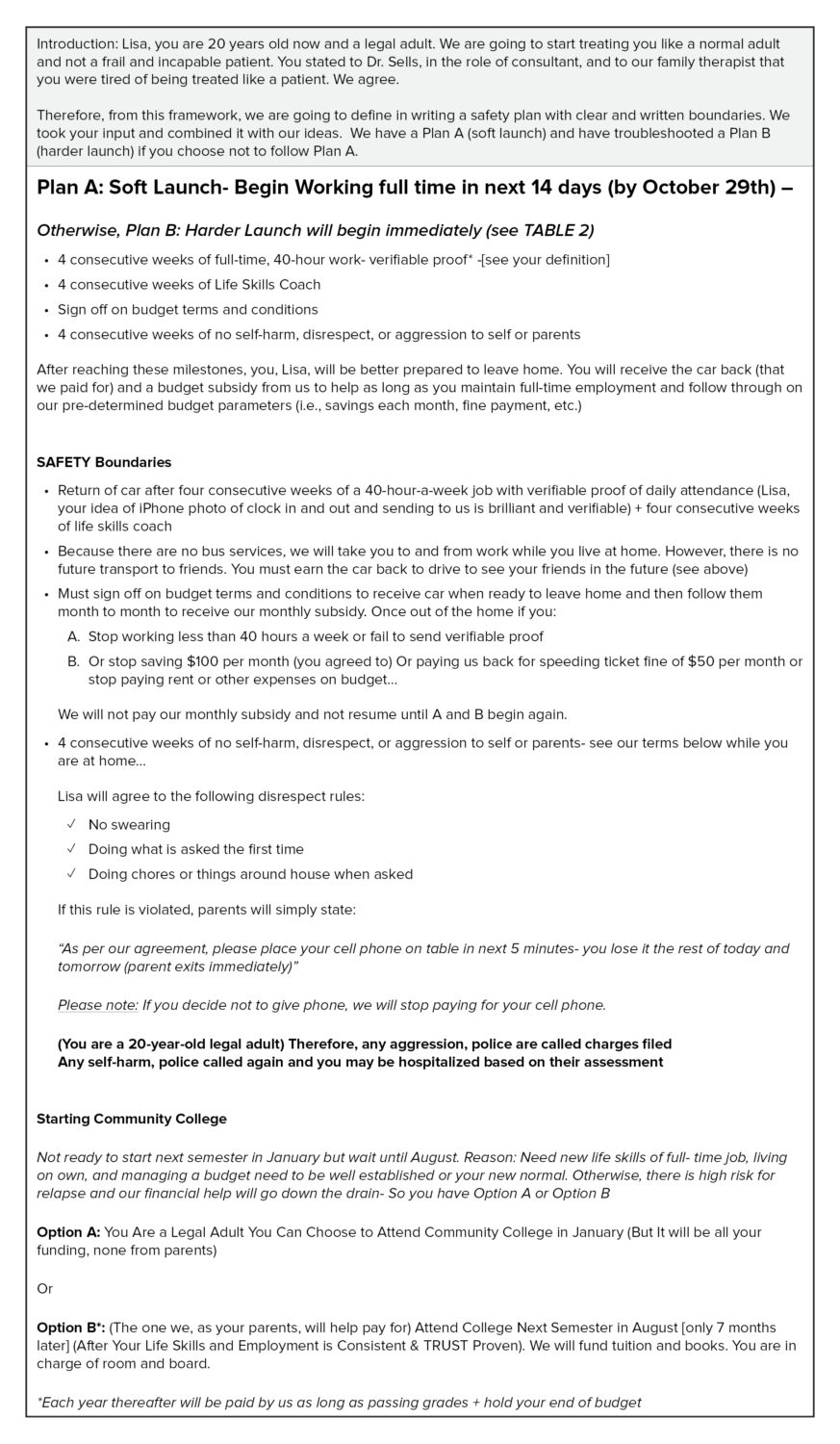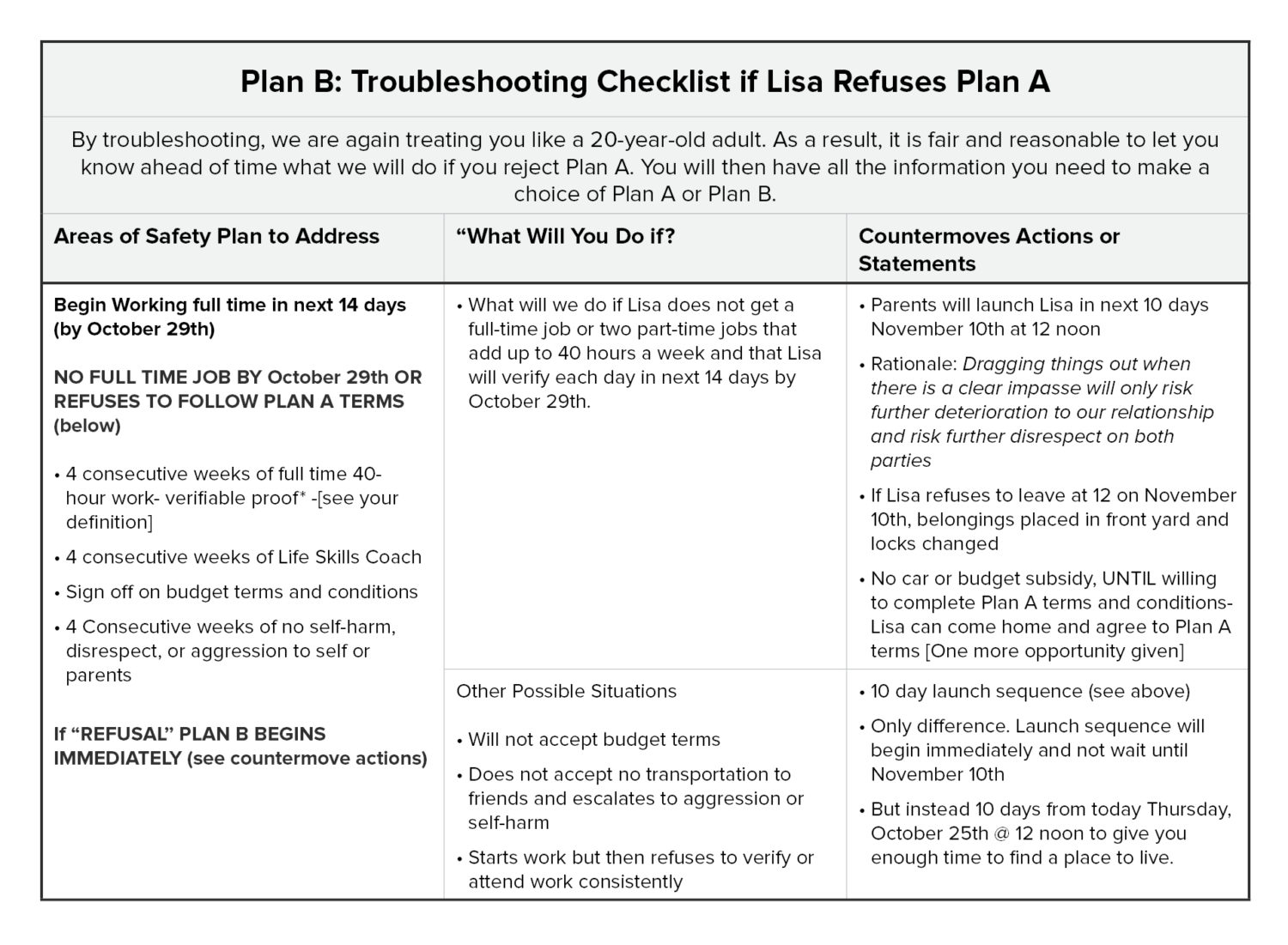Failure to Launch describes young adults who are struggling with the transition to adulthood. They have an inability to leave home and support themselves. This trend is reaching epidemic proportions. For example, a recent study cited in Psychology Today reported that 45 percent of young adults in the state of New Jersey between the ages 18 and 34 still live with their parents—even though they are employed. While some of this trend can be attributed to economic factors (i.e., costly housing), a majority can be traced back to dysfunctional patterns within the family coupled with unresolved trauma. When this happens, the young adults can develop “learned helplessness.” They accept and remain passive in the negative situation of not leaving home despite their ability to change it.
The Safety Plan Technique: The Butterfly and the Cocoon
When a butterfly struggles to leave its cocoon, we may want to help by opening it up with our hands. However, scientists know that the butterfly is supposed to struggle. Its struggle to push through the tiny opening of the cocoon pushes the fluid out of its body and into its wings. Without the struggle, the butterfly cannot fly.
In the same way, the FST Safety Plan technique is the metaphorical cocoon used to help young adults to fly – to leave home with success.
Tables 1 and 2 below illustrate what a well-detailed Safety Plan looks like with 19-year-old Lisa. For more information on this technique please read Chapter 7 in Treating the Traumatized Child: A Step-by-Step Family Systems Approach.
Table 1: The Safety Launch Plan

Table 2: Troubleshooting the Safety Plan
The question now becomes “what will you do if?” Lisa refuses to agree to or follow Plan A. As the troubleshooting technique article outlines and trauma playbook illustrates, relapse is a real risk that must be addressed before it occurs using a “troubleshooting checklist”. The troubleshooting checklist is an essential addendum to the Safety Plan and illustrated in Table 2:
Table 2: Troubleshooting Checklist for The Safety Launch Plan

Case Commentary
The key elements of Lisa’s failure to launch plan are the following:
- Safety and Boundary Setting Work Hand and Glove – Professionals often equate safety planning to specific actions such as removing knives in a home if the client is suicidal or calling the police in cases of domestic violence. These are great examples of safety planning and should be used when needed. However, the Family Trauma Institute expands the definition of safety planning further by including clear and written boundaries along with clear terms and conditions. In the case of a failure to launch these include terms and conditions around employment, transportation, disrespect, aggression, self-harm, budgets, and life-skill coaching. This includes natural and logical consequences as well as troubleshooting if Lisa decides not to follow the Plan A terms and conditions.
- Curtailing or Eliminating Enabling – A clear safety plan also curtails or eliminates enabling behavior by the parent or caregiver. For example, before the safety plan, Lisa’s parents would always back down when she was disrespect or aggressive. They provided transportation, money, cars, etc. whether Lisa was disrespectful or not. Under these conditions, Lisa had no reason to leave the comforts of home. However, with a pre-determined safety plan, the parents had the tools to set boundaries. In addition, troubleshooting empowered the parents, giving them a clear Plan B with exactly what to do if Lisa failed to follow Plan A.
- Unhealthy Undercurrents, Trauma, & Failure to Launch –The types of dysfunctional family dynamics (i.e., lack of consistent discipline, entitlement, learned helplessness, etc.) that prevent young adults from leaving home are what we call unhealthy undercurrents.
- These unhealthy undercurrents are the root causes or drivers of a failure to launch but remain hidden to the naked eye. These unhealthy undercurrents are often birthed from traumatic events that have not healed naturally on their own. In Lisa’s case, the traumatic events were two-fold:
- Since childhood, Lisa felt the marital tension between her parents and the depression of her mom. In turn, Lisa consciously or unconsciously helped her mom and dad by being a distraction to their pain. As long as Lisa was incompetent, the parents could focus on her and not themselves. By failing to launch and never growing up, she could remain a distraction.
- Lisa experienced a rape and a move from the only place she loved at the same time. The guilt both parents felt over the rape and the move, coupled with Lisa role as the distractor, birthed the unhealthy undercurrents of a lack of accountability or limit setting by the parents. Thus, Lisa lacked confidence and at times acted like someone who was mentally ill.
Over time, these unhealthy undercurrents (i.e., lack of accountability, no consistent limits, mental illness label) led to problems symptoms of entitlement and learned helplessness.
Table 3 illustrates how the safety plan was used as a strategic directive or tool to fill in the missing healthy undercurrents of consistent limits, accountability, and normality. In turn, once these healthy undercurrents were in place, Lisa could launch successfully.
Table 3: Strategic Directives for Unhealed Trauma or Wounds

Final Thoughts
A failure to launch problem is one of the most challenging problems in trauma treatment. It can feel to the therapist like a slippery eel that one cannot catch. Young adults who fail to leave home are deeply entrenched in the unhealthy undercurrents between themselves and their parents. Like an alcoholic family, the parents or alcoholic child adamantly say that they want sobriety and that life will be so much better. But at every turn, there is resistance because the failure to launch a child or the alcoholic solves a huge problem in the family. It may be a distraction, as in the case of Lisa, or medicating a trauma with alcohol or drugs. When this happens, the Safety Plan technique helps unstick this intractable problem.
For more training on Family Systems Trauma Techniques, join the Family Trauma Institute’s live webinars with Dr. Scott Sells.
Scott P. Sells, Ph.D., MSW, LCSW, LMFT, is the author of three books, Treating the Tough Adolescent: A Family-Based, Step-by-Step Guide (1998), Parenting Your Out-of-Control Teenager: 7 Steps to Reestablish Authority and Reclaim Love (2001), and Treating the Traumatized Child: A Step-by-Step Family Systems Approach (2017). He can be contacted at spsells@familytrauma.com or through LinkedIn.

